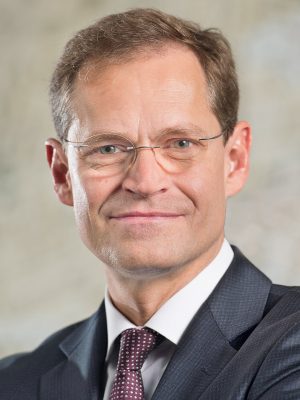Berlin, Germany
General Information
Administrative status
Capital of Federal Republic of Germany
Berlin Modernism Housing Estates
Registration Year
2008
Historical function
Social and architectural
Location and Site
Berlin is located in northeastern part of Germany on the banks of the Rivers Spree and Havel. It is the capital of the Federal Republic of Germany and also one of the 16 federal states. With more than 3.4 million inhabitants it represents the most populous city of Germany and the largest city of the European Union.
The City of Berlin actually features three different World Heritage Sites: The “Palaces and Parks of Potsdam and Berlin” were first inscribed on World Heritage List in 1990. This property has been extended twice, first in 1992 and then in 1999 – the year, when Museumsinsel (Museum Island) was registered too. The six Berlin Modernism Housing Estates were awarded World Heritage Status in 2008.
Registration Criteria
Criterion (ii): The six Berlin housing estates provide an outstanding expression of a broad housing reform movement that made a decisive contribution to improving housing and living conditions in Berlin. Their quality of urban, architectural and garden design, as well as the housing standards developed during the period, served as guidelines for social housing constructed since then, both in and outside Germany.
Criterion (iv): The six Berlin housing estates are exceptional examples of new urban and architectural typologies, designed in the search for improved social living conditions. Fresh design solutions and technical and aesthetic innovations were incorporated by the leading modern architects who participated in their design and construction.
Historical Reference
The six housing estates include more than 6000 residential units in 7 districts of Berlin an testify the housing reform projects, which largely occurred between 1914 and 1934, especially during the Weimar Republic, when the city was particularly progressive socially, politically and culturally. Bruno Taut, Martin Wagner and Walter Gropius were among the leading architects of these projects:
- Falkenberg Garden City (1913-1916, architects: Bruno Taut, Heinrich Tessenow; garden architect: Ludwig Lesser);
- Schillerpark Estate (1924-1930/ 1953-1957, architects: Bruno Taut, Hans Hoffmann; garden architect: Walter Rossow);
- Britz Residential Estate (1925-1930, architects: Bruno Taut, Martin Wagner; garden architects: Leberecht Migge, Ottokar Wagler);
- Carl Legien Estate (1928-1930, architects: Bruno Taut, Franz Hillinger);
- White City (1929-1931, architects: Otto Rudolf Salvisberg, Bruno Ahrends, Wilhelm Büning; garden architect: Ludwig Lesser);
- Siemensstadt Estate (1929-1930, architects: Otto Bartning, Fred Forbart, Walter Gropius, Hugo Häring, Paul-Rudolf Henning, Hans Scharoun; garden architect: Leberecht Migge).
The estates are characterized by a high standard of architecture and urban design and a wealth of experimental social residential forms and were revolutionary from a social and hygienic perspective. For the first time, modern dwellings geared to the functional needs of the families were also created for people with low incomes. Another new feature was the great importance of green space, which became an essential part of the plan for each residential estate. The projects soon became considerable influence on the development of housing around the world.
Sources:
Museumsinsel (Museum Island), Berlin
Registration Year
1999
Historical function
Cultural and arquitectural
Location and Site
Berlin is located in northeastern part of Germany on the banks of the Rivers Spree and Havel. It is the capital of the Federal Republic of Germany and also one of the 16 federal states. With more than 3.4 million inhabitants it represents the most populous city of Germany and the largest city of the European Union.
The City of Berlin actually features three different World Heritage Sites: The “Palaces and Parks of Potsdam and Berlin” were first inscribed on World Heritage List in 1990. This property has been extended twice, first in 1992 and then in 1999 – the year, when Museumsinsel (Museum Island) was registered too. The six Berlin Modernism Housing Estates were awarded World Heritage Status in 2008.
Registration Criteria
Criterion (ii): The Berlin Museumsinsel is a unique ensemble of museum buildings, which illustrates the evolution of modern museum design over more than a century.
Criterion (iv): The modern museum is a social phenomenon that owes its origins to the Age of Enlightenment, and its extension to all people to the French Revolution. The Museumsinsel is the most outstanding example of this concept given material form and placed in a symbolic central urban setting.
Historical Reference
Museum Island is situated on the northern part of the small island in Berlin’s Spree River, in the historical centre of Berlin. It is a complex of five buildings, built between 1824 and 1930 by the most renowned Prussian architects:
- Karl Friedrich Schinkel’s neo-classical Old Museum (1825-1828, rebuilt 1958-1966 after war damage);
- The late neo-classical New Museum (1843-1855; destroyed in the war, ruin rebuilt by David Chipperfiled in 2003-2009) by Schinkel’s pupil and successor Friedrich August Stüler;
- The Old National Gallery based on the ideas of Stüler, was built to the plans of his successor Johann Heinrich Strack (1867-1876; rebuilt 1948/49 and 1955-1966 after destruction in the war, general refurbishment 1999-2001);
- The Wilhelmine Kaiser Friedrich Museum (1897-1904, gradually rebuilt after war damage, general refurbishment 2000-2006), known as Bode Museum since 1956, located at the visually striking northern end of the island;
- The monumental 20th century Pergamon Museum designed by Alfred Messel and his friend Ludwig Hoffmann, the Berlin municipal building director (1910-1930, rebuilt after war damage up to 1953 and 1958).
The buildings with their unique collections of art and cultural artefacts, spanning several millennia from Europe and the wider Mediterranean region, are among the most important museums worldwide, and are even comparable with the large museums in Paris, Landon or the Vatican museums in Rome. Museum Island is not only outstanding because of its architectural and urban value. In its origins it reflects the history of ideas in the 19th century and it documents the changes in the function and importance of the museum as an institution through to the 21st century.
Sources:
Palaces and Parks of Potsdam and Berlin
Registration Year
1990
Historical function
Artistic and cultural
Location and Site
Berlin is located in the northeastern part of Germany on the banks of the Rivers Spree and Havel. It is the capital of the Federal Republic of Germany and also one of the 16 federal states. With more than 3.4 million inhabitants it represents the most populous city in Germany and the largest city of the European Union.
The City of Berlin actually features three different World Heritage Sites: The “Palaces and Parks of Potsdam and Berlin” were first inscribed on the World Heritage List in 1990. This property has been extended twice, first in 1992 and then in 1999 – the year, when Museumsinsel (Museum Island) was registered too. The six Berlin Modernism Housing Estates were awarded World Heritage Status in 2008.
Registration Criteria
Criterion (i): With more than 500 ha of parks and not less than 150 buildings, built between 1730 and 1916, the complex of palaces and parks forms an artistic whole.
Criterion (ii): The architectural, horticultural and landscaping masterpieces synthesize the different influences from Italy, England, Flanders, or France.
Criterion (iv): The property is an outstanding example of architectural creations and landscaping compositions associated with the monarchic ideas of the Prussian kings.
Historical Reference
For three hundred years, the Potsdam-Berlin Havel landscape with its many lakes and forests was the preferred site for the new residences, gardens and parks of electors, kings and emperors of the Hohenzollern Dynasty. They recognized the special quality of the natural environment as early as the 17th century. It was developed to perfection by the garden artist Peter Joseph Lenné in the 19th century. Lenné combined his grand vision of a beautified “Potsdam Island” with palaces, gardens and parks in 1833 by sketching a “beautification plan of Potsdam’s environment”. This plan already covered the entire range of today’s World Heritage Site. Many artists, architects and landscape gardeners, not only Lenné, but also Knobelsdorff and Schinkel to name just the most famous, contributed to this walk-in landscape painting with its intricately composed Baroque, Romantic and Classic elements. Today, avenues and kilometer-long vistas connect a large number of palaces, gardens, parks and individual buildings to an artistic whole. Berlin’s territory includes castle and park Glienicke, the Jagdschloss and park Glienicke, Böttcherberg with Loggia Alexandra in Klein Glienicke, Nikolskoe, Pfaueninsel and Glienicker Brücke.
Sources:
Photos

News
Contact

Ms. Kai Wegner
Mayor of Berlin
Senate Chancellery
Rathausstrasse 15
Berlin, Germany
10178
+ 49 03 9026 - 3015
Die-Regierende-Buergermeisterin@senatskanzlei.berlin.de



